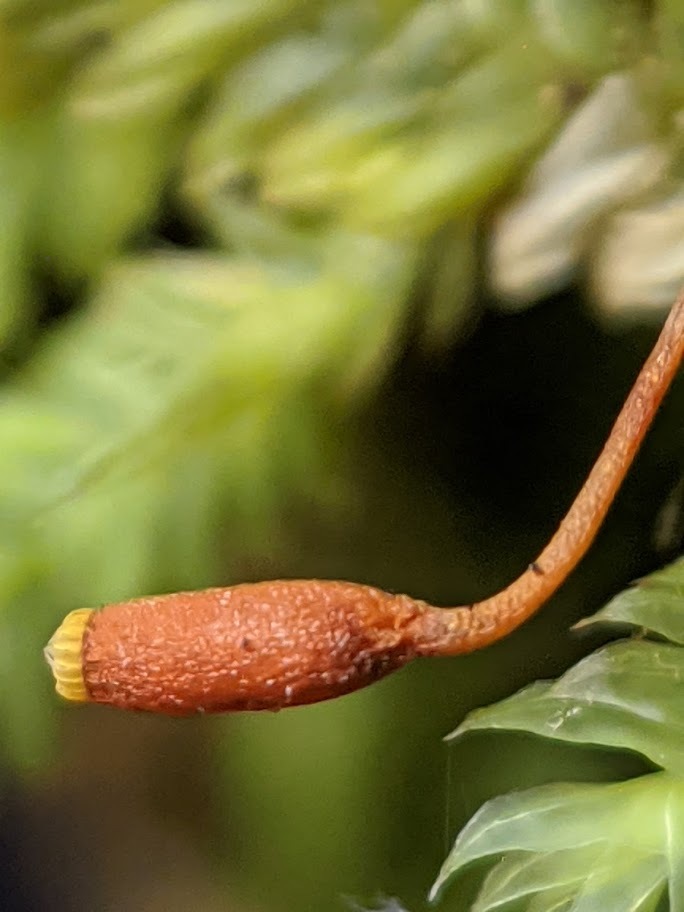Lopidium concinnum
(Hook.) WilsonMonoicous, occasionally dioicous (not in Victoria) and rarely heteroicous (not in Victoria). Asexual propagules absent. Loosely gregarious to isolated stems arising from rocks, tree ferns or tree trunks or branches, rarely on soil, pale to grey-green. Stems to 9 cm long, with an unbranched stipe section up to 5 cm from base, tomentose at base; central strand absent. Leaves flat, monomorphic or dimorphic; laminal cells hexagonal, 7–20 μm long, 7–20 μm wide; margins entire to serrate, with 1–5 rows of cells forming a distinct continuous border or border sometimes interrupted near apex. Lateral leaves asymmetric or symmetric, ovate to oblong or lanceolate-ovate, 0.5–3.5 mm long, 0.4–1.5 mm wide; apex acuminate or acute; costa percurrent. Ventral leaves symmetric, oblong-ovate, broad-ovate to ovate, occasionally almost orbicular, 0.3–3 mm long, 0.2–1.5 mm wide; apex acuminate or acute; costa subpercurrent to excurrent. Setae 2.5–9.5 mm long, light brown. Capsule subglobose to cylindric, 0.7–2 mm long. Calyptra glabrous. Operculum 0.9–1.4 mm long.
VVP, OtP, CVU, EGU, WPro, HSF, HNF, OtR, Strz, HFE, VAlp. New Zealand and South America. Also QLD, NSW and Tas. Mostly in wet sclerophyll forest and cool-temperate rainforest in high rainfall areas south of the Great Dividing Range (e.g. Otways, Yarra Ranges, Dandenongs, Strzelecki Ranges, Wilsons Promontory, Errinundra Plateau) with outlying occurrences at Byaduk Caves and at some sites along the Great Dividing Range.
 Spinning
SpinningKruijer, H. (2002). Hypopterygiaceae of the world. Blumea supplement 13: 1–388.
Kruijer, H. (2006). Hypopterygiaceae, in McCarthy, P.M. (ed.), Flora of Australia, vol. 51, pp. 377–388.. ABRS and CSIRO, Canberra and Melbourne.

